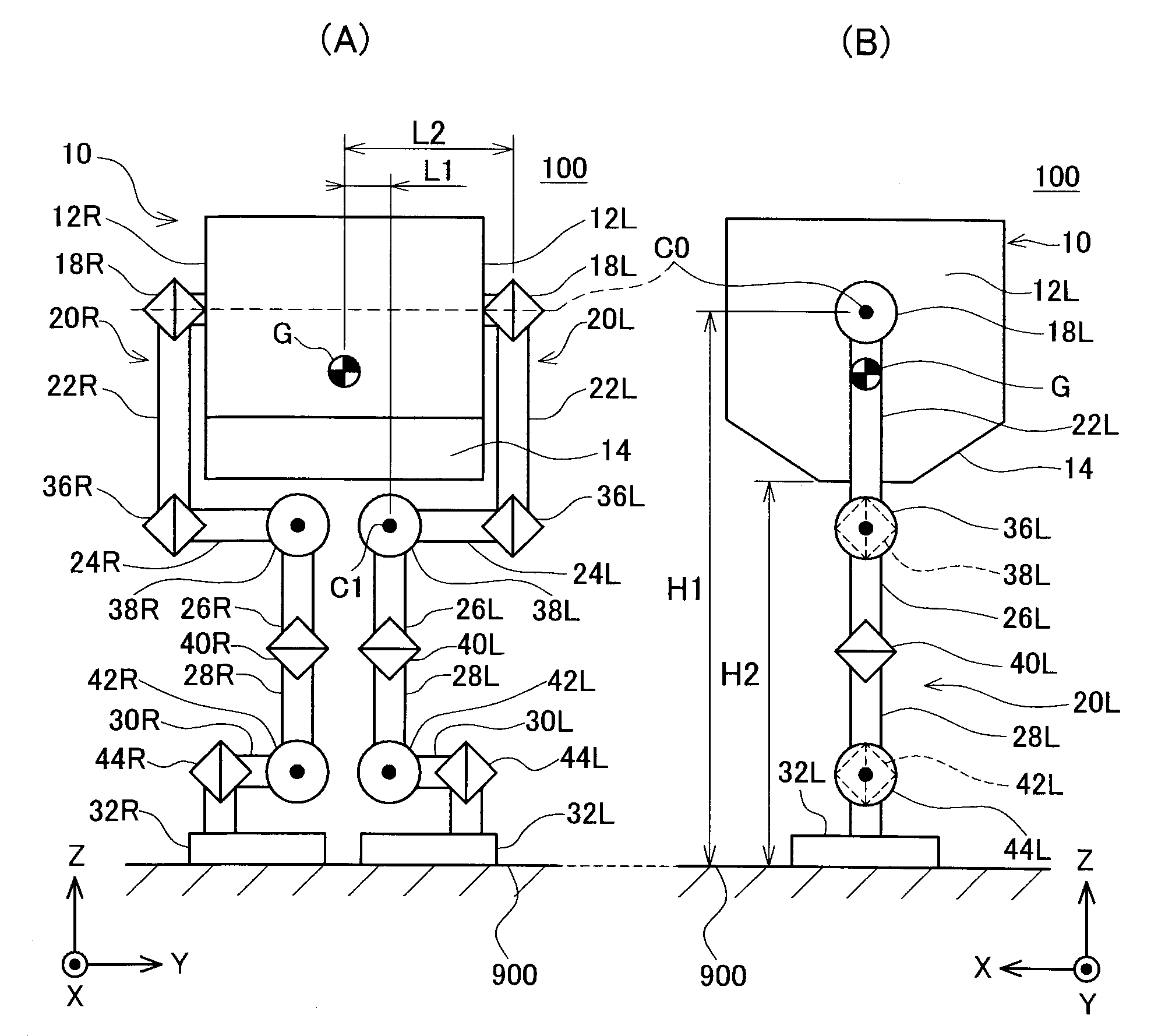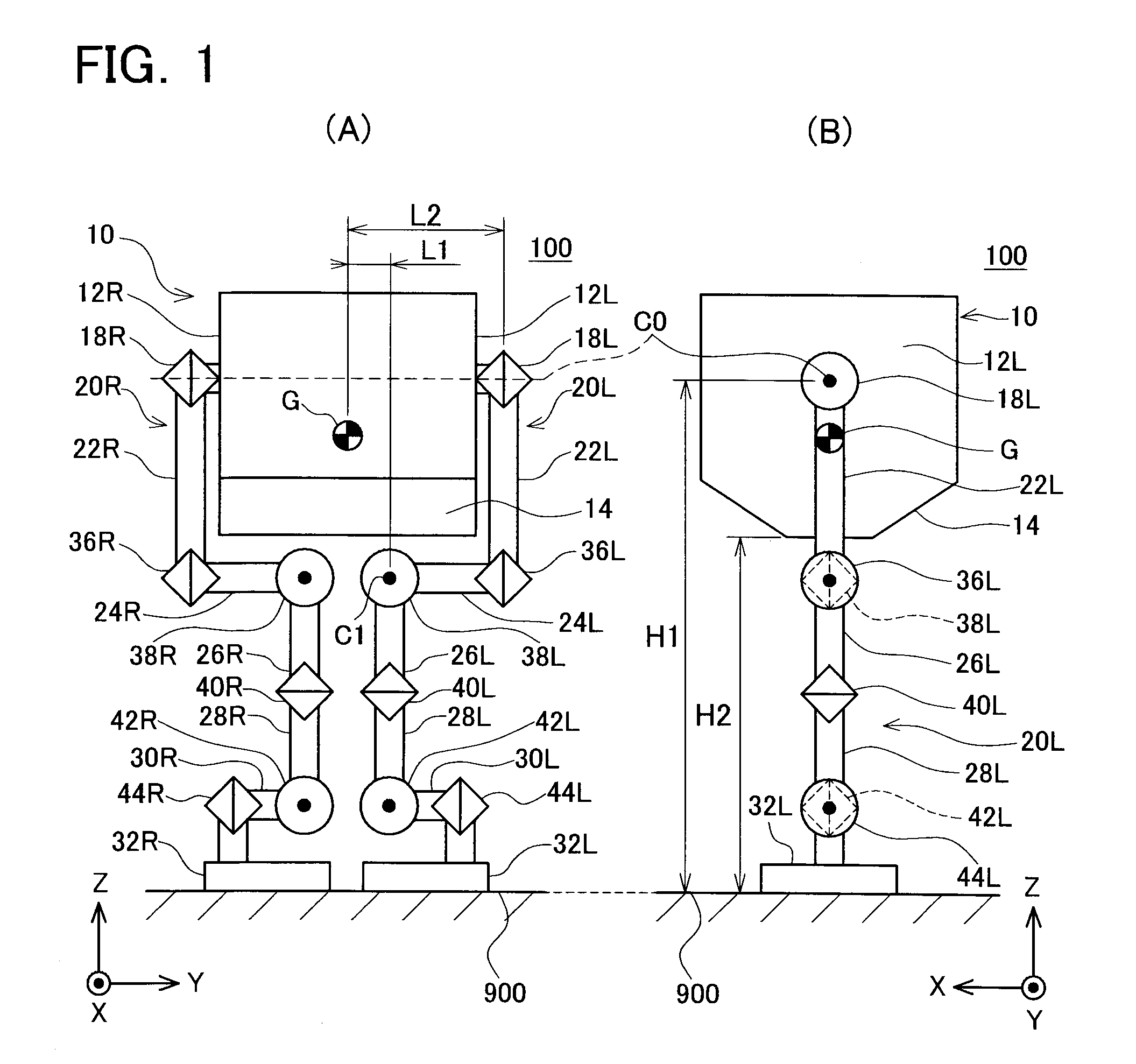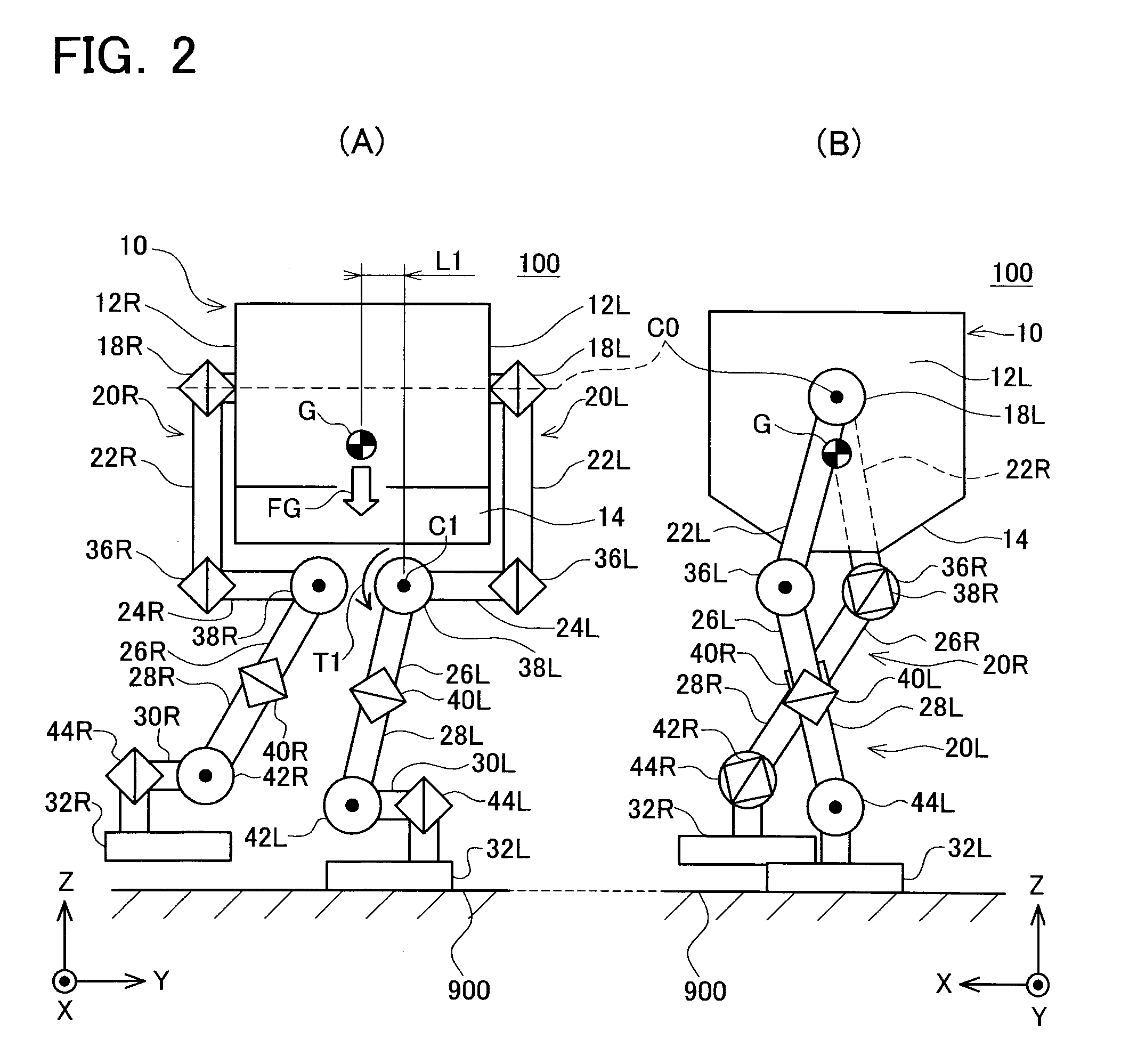Legged Robot
a robot and leg technology, applied in the field of legs, can solve the problems of large distance in the pitch direction between the center of mass of the trunk and the leg, and achieve the effects of reducing load and moment, preventing an increase in moment, and large step length
- Summary
- Abstract
- Description
- Claims
- Application Information
AI Technical Summary
Benefits of technology
Problems solved by technology
Method used
Image
Examples
first embodiment
[0039]The legged robot according to the first embodiment of the present invention will be explained with reference to FIGS. 1(A) to 2(B). FIG. 1(A) is a front view of the legged robot 100. FIG. 1(B) is a side view of the legged robot 100. The legged robot 100 includes a trunk 10 and a pair of legs 20L and 20R. Note that in FIG. 1(B), the illustrations of parts that are hidden by the parts that are positioned to the front side of the figure are omitted except for the parts shown by the reference numerals 38L and 42L.
[0040]First, the coordinate system will be explained. In FIG. 1(A) and FIG. 1(B), an XYZ coordinate system defines a right-handed orthogonal coordinate system. This XYZ coordinate system has an origin that is fixed to the trunk 10 of the legged robot 100. The X-axis extends forward from the trunk 10 of the legged robot 100. The X-axis is referred to as the roll axis. The Y-axis extends along the lateral direction of the trunk 10 of the legged robot 100. The Y-axis is refe...
second embodiment
[0072]Next, the second embodiment will be explained with reference to FIGS. 3(A) and 3(B). A legged robot 200 according to the second embodiment has a trunk 210 and a pair of legs 220L and 220R. FIG. 3(A) is a front view of the legged robot 200 in a state in which the right leg 220R is the free leg and the left leg 220L is the grounding leg. FIG. 3(B) is a side view that corresponds to FIG. 3(A). In FIG. 3(B), except for a right first link 222R, the illustrations of the parts hidden by the parts that are positioned to the front of the figure are omitted.
[0073]The differences between the legged robot 200 and the legged robot 100 shown in FIG. 1(A) are the shape of a bottom surface 214 of the legged robot 200 and that the legs 220L and 220R of the legged robot 200 each have rollers 16L and 16R. The other aspects are identical to those of the legged robot 100 shown in FIG. 1(A), and thus the detailed explanation thereof has been omitted. Note that except for the numbers in the third di...
third embodiment
[0081]Next, a third embodiment will be explained with reference to FIG. 4. FIG. 4 is a side view of a legged robot 300 according to the third embodiment. The legged robot 300 has a trunk 310, a pair of legs 320L and 320R, and a pair of leg connecting portions 318L and 318R. The explanation of the pair of legs 320L and 320R will be omitted because they are identical to the pair of legs 20L and 20R that are provided on the legged robot 100 of the first embodiment. The pair of legs 320L and 320R may be identical to the pair of legs 220L and 220R that are provided on the legged robot 200 of the second embodiment. The explanation of the pair of leg connecting portions 318L and 318R is omitted because they are identical to the pair of leg connecting portions 18L and 18R that are provided on the legged robot 100 of the first embodiment.
[0082]In the side view of FIG. 4, with respect to the pair of legs 320L and 320R, the illustration of the parts that cannot be seen due to parts that are po...
PUM
 Login to View More
Login to View More Abstract
Description
Claims
Application Information
 Login to View More
Login to View More - R&D
- Intellectual Property
- Life Sciences
- Materials
- Tech Scout
- Unparalleled Data Quality
- Higher Quality Content
- 60% Fewer Hallucinations
Browse by: Latest US Patents, China's latest patents, Technical Efficacy Thesaurus, Application Domain, Technology Topic, Popular Technical Reports.
© 2025 PatSnap. All rights reserved.Legal|Privacy policy|Modern Slavery Act Transparency Statement|Sitemap|About US| Contact US: help@patsnap.com



